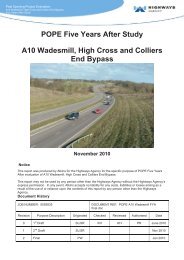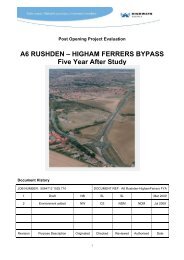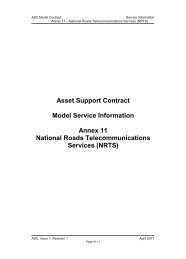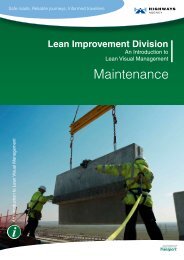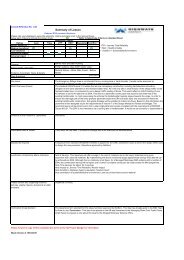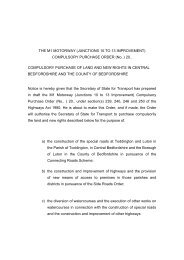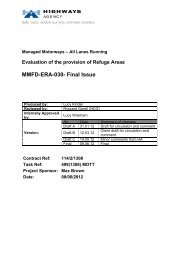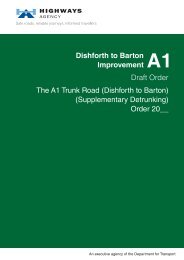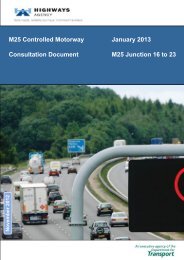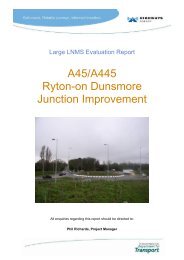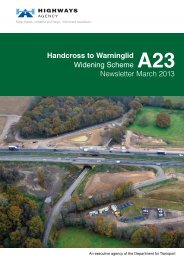A1(T) Elkesley Junction Improvements - Highways Agency
A1(T) Elkesley Junction Improvements - Highways Agency
A1(T) Elkesley Junction Improvements - Highways Agency
You also want an ePaper? Increase the reach of your titles
YUMPU automatically turns print PDFs into web optimized ePapers that Google loves.
• Ensuring that mechanical plant and equipment used for the purpose of theworks are fitted with effective exhaust silencers and are maintained in goodworking order;• Careful selection of quiet plant and machinery to undertake the required workwhere available.• All major compressors should be ‘sound reduced’ models fitted with properlylined and sealed acoustic covers which should be kept closed whenever themachines are in use.• Any ancillary pneumatic percussive tools should be fitted with mufflers orsilencers of the type recommended by the manufacturers;• Machines in intermittent use should be shut down in the intervening periodsbetween work i.e. maintain a ‘no idling policy’;• Positioning of all ancillary plant such as generators, compressors and pumpsbehind existing physical barriers, and direction of noise emissions from plantincluding exhausts or engines away from sensitive locations, in order to causeminimum noise disturbance. Where possible in potentially sensitive areas,acoustic barriers or enclosures should be utilised around noisy plant andequipment. A well constructed 3 m high barrier of 10 mm softwood canreduce noise levels by 5 – 10 dB;• Handling of all materials in a manner which minimises noise;• Switching of all audible warning systems to the minimum setting required bythe Health and Safety Executive;• Adherence to the codes of practice for minimising noise emissions fromconstruction and piling works, including those provided in British Standard BS5228:1997.In order to reduce disturbance to local residents, the District Councils and affectedresidents should be kept informed of the works to be carried out, and of anyproposed work outside normal hours, especially night time works. The Contractorthroughout the construction phase should operate a complaints procedure whichshould ensure that any complaints or queries raised by residents are promptlyaddressed.It is also recommended that on-site monitoring of noise levels and constructionactivities be undertaken in order to verify the predicted worst-case noise levels andalso to ensure that all available and appropriate measures are implemented tominimise the potential impact upon local sensitive receptors.Construction Phase Residual EffectsWith appropriate mitigation measures implemented it is anticipated that noise levelsat sensitive receivers would comply with the construction noise criteria in Table 9.2.82



